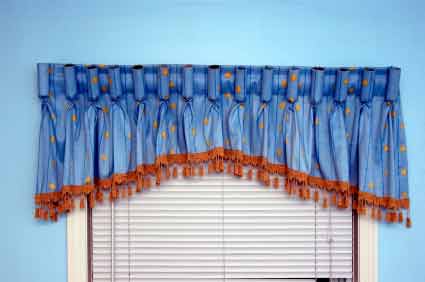Types of Curtain Headings
What is a Curtain Heading?
A curtain heading is the gathering or pleating at the top of the curtain. This is achieved by sewing a heading tape to the top of the fabric. The tape has cords that are threaded along the tape and when pulled, they draw up the fabric to its specific style. It has pockets, which receive the hooks to attach it to the track.
Depending on the type of tape there are options for positioning the curtain top above below or equal to the track via the placement of hooks into the pockets. The design of the heading tape will determine the style of the pleating/gathering and dictates the fullness of the curtain.
Gathering tapes requires 1 ½ -2 times the track width, pencil or box pleats require 2 ½ times the track width to create the correct effect.
Standard Tape
This is a narrow heading tape about 2.5cm in width that forms simple gathers. It has one row of hook suspension pockets. It is used where there is a valance or pelmet and the curtain heading will not be visible and for small informal curtains and sheers.

Standard Gathered Heading
Deep Triple Pleats
These use 4 pronged hooks and deep pleating tape. Fabric requirements are 2 ¼ – 2 ½ times the width of the window opening.
Pencil Pleat Tape
Read about Pencil Pleats

Pencil Pleat
Smocked
This tape has two rows of pencil pleating which imitates smocking as the pleats are linked alternately to form a honeycomb effect.
Double Pleats
Two pleats of fabric tacked at the base of the pleat at regular intervals across the curtain.
French Pleat, Triple Pleat, Pinch Pleat
Visit French Pleat
Goblet Pleats
These are simply pinch pleats which have their top edge plumped out and padded with wadding to form a goblet shape.

Goblet Pleat

Goblet Pleat
Knife Pleat
These are sharply pressed slim, closely spaced pleats which are all facing the same way.
Box Pleat
A flat symmetrical pleat which is created by the fabric folding to the back of each side of the pleat.
Inverted Pleat
A pleat which is formed like a box pleat but in reverse, therefore the edges of the pleat meet in the centre on the face side of the fabric.

Inverted Pleat
Cased Heading
A heading where a pocket is created at the top of the fabric which is open at both ends so that a pole or rod may be threaded through. Read more about casement curtains.

Cased Heading
Poufed Heading
This is a fat ruffle that stands up above the rod and is formed when you tease the top of a gathered heading or rod pocket/casement heading.
Scalloped Heading
Generally used with a rod or pole it is a heading with deep half round cutouts at the top. Used often with cafe curtains.

Scallop Top Heading
Specialty Tapes
Austrian Blind Tape, Festoon Tape, Detachable-lining tape.
